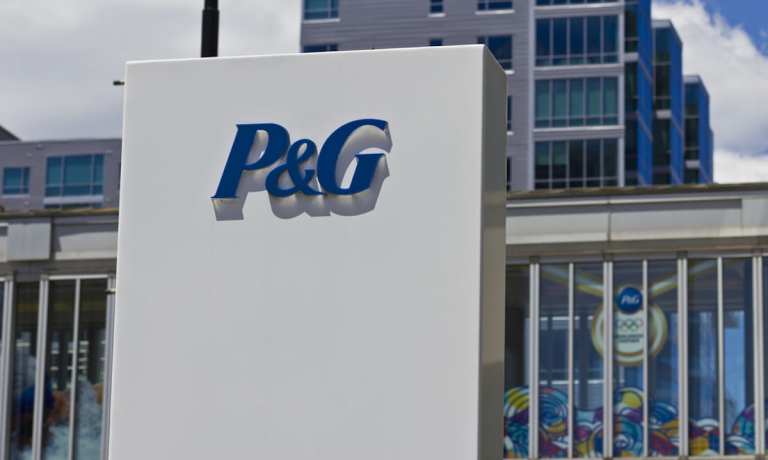P&G Sees Net Sales Increase In Q3, eCommerce Up 50 Percent

The pandemic is over at P&G, and the digital shift seems to be intact. The company announced on Tuesday (April 20) that net sales for the third quarter of FY2021 were up 5 percent year over year to $18.1 billion, led by 9 percent net sales growth in the beauty segment and 8 percent growth in the fabric and home care segment.
“We’re seeing a return to higher levels of consumption in categories that suffered as a result of the pandemic,” P&G Vice Chairman and Chief Operating Officer Jon Moeller told Yahoo! Finance in an interview. “For example, dry shaving. As people stayed home, they didn’t shave as much. Certainly, our away-from-home business that serves hotels and restaurants is starting to see a little bit more life. And, you know, some of the beauty businesses, like deodorant, for example, the market had declined a little bit and that’s beginning to pick up.”
While these categories saw an increase as newly vaccinated consumers return their focus to their appearance in preparation for in-person events, healthcare fared less well, with mask-wearing, socially distant consumers avoiding the season’s usual contagions.
“Personal healthcare organic sales were down mid-singles, driven by a very weak cold, flu season on top of difficult comparisons in the base period,” P&G Chief Financial Officer Andre Schulten said on a call with analysts on Tuesday morning (April 20). “US sales in the respiratory category were down more than 40 percent in this March quarter versus last year.”
With the rise in demand for many of P&G’s products, commodity costs are expected to increase, which for consumers will mean an increase in prices, especially for products such as diapers and feminine hygiene products.
“We will offset a portion of this impact with price increases,” Schulten said. “Our baby care, feminine care and adult incontinence businesses have announced price increases in the United States that would go into effect in mid-September. The exact timing and amount of increases vary by brand and sub-brand in the range of mid to high single-digits.”
The company aims to introduce to these products “new product innovations, adding value for consumers” in an effort to keep customers loyal through the price hikes. Moeller noted on the call that there are certain advantages to such a significant rise in commodity costs — namely, that competitors will also be forced to increase their prices, maintaining a mostly level playing field.
“This is one of the bigger increases in commodity costs that we have seen over the period of time that I have been involved with this, which is a fairly long period of time,” said Moeller. “That’s not all bad. When commodities move significantly, obviously they affect everyone, including both manufacturer brands and own-label retail brands … When they move modestly, it can be much more difficult in that regard.”
eCommerce sales were up 50 percent and represented 40 percent of global sales.
“The strength of our brands … ensures that we can be on the landing page in the top search results,” said Schulten. “I think the strength of our brands … is a big advantage. So our logistics capability, I think, can create value in conjunction with retailers in the supply chain that is driven by eCom. So I think there are many areas of strength that we can apply to make sure we’re competitive in that environment.”
Moeller noted that the company’s brand strength is fairly channel-agnostic, saying, “In aggregate, our market shares in eCommerce are about equal to brick-and-mortar. There are countries where it’s lower. There are countries where it’s higher. There are categories where it’s lower. There are categories where it’s higher. And the same is true generally for margin. So all that put together wouldn’t necessarily indicate that [we were] preferenced by the development of one channel versus the other.”
Going forward, the company is focusing on “daily use products in categories where performance plays a significant role in brand choice,” Moeller said. He added that this focus on “portfolio superiority, productivity, constructive disruption and organization structure” was effective before the pandemic, that it carried the brand through the pandemic and that it “will continue to serve us well post-crisis.”
While Moeller stated that P&G executives are “optimistic about our post-crisis prospects,” he pointed out that rising COVID-19 cases in international markets mean that more supply chain disruptions may occur in the near future. He also noted that “there continues to be social unrest and economic distress in many parts of the world that also affect the prospects for category growth.”
Accordingly, he surmised, “We will undoubtedly experience some volatility as we move through the crisis, and quarterly results will not move in a straight line and are more difficult to predict.”
Read More On Earnings:
- Netflix Adds 8 Million Subscribers, Touts Advertising Revenue
- Equifax: Adoption of Cloud, AI Technologies Drive Company’s ‘Next Chapter’
- Domino’s Loyalty Refresh Doubles Members’ Pickup Orders Amid Consumer Hesitance
- United Airlines Hits Record High in Second-Quarter Passenger Volume